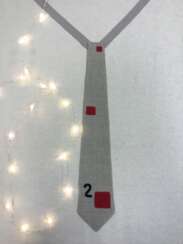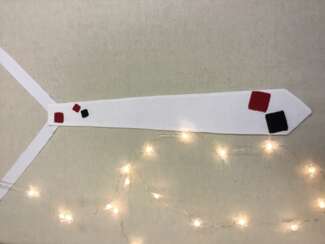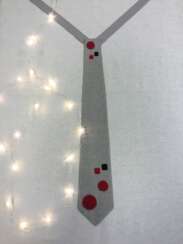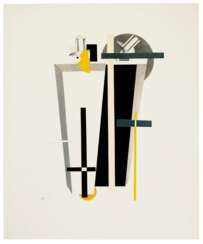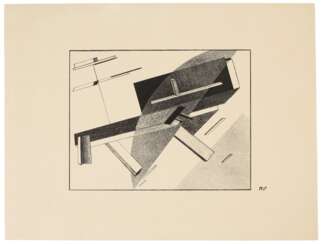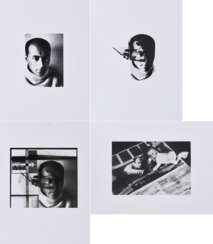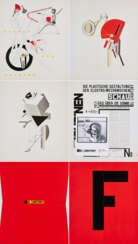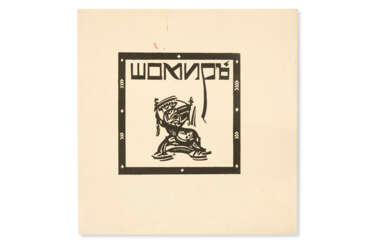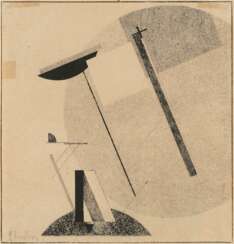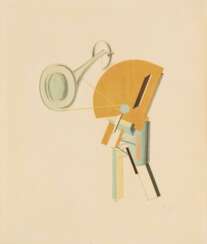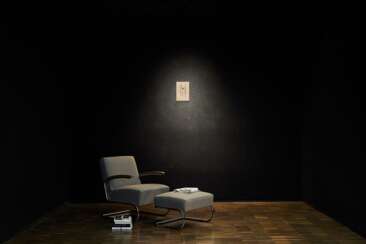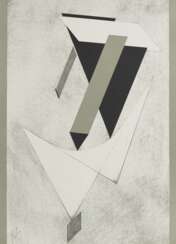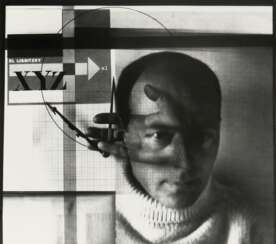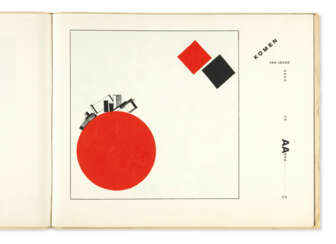лисицкий







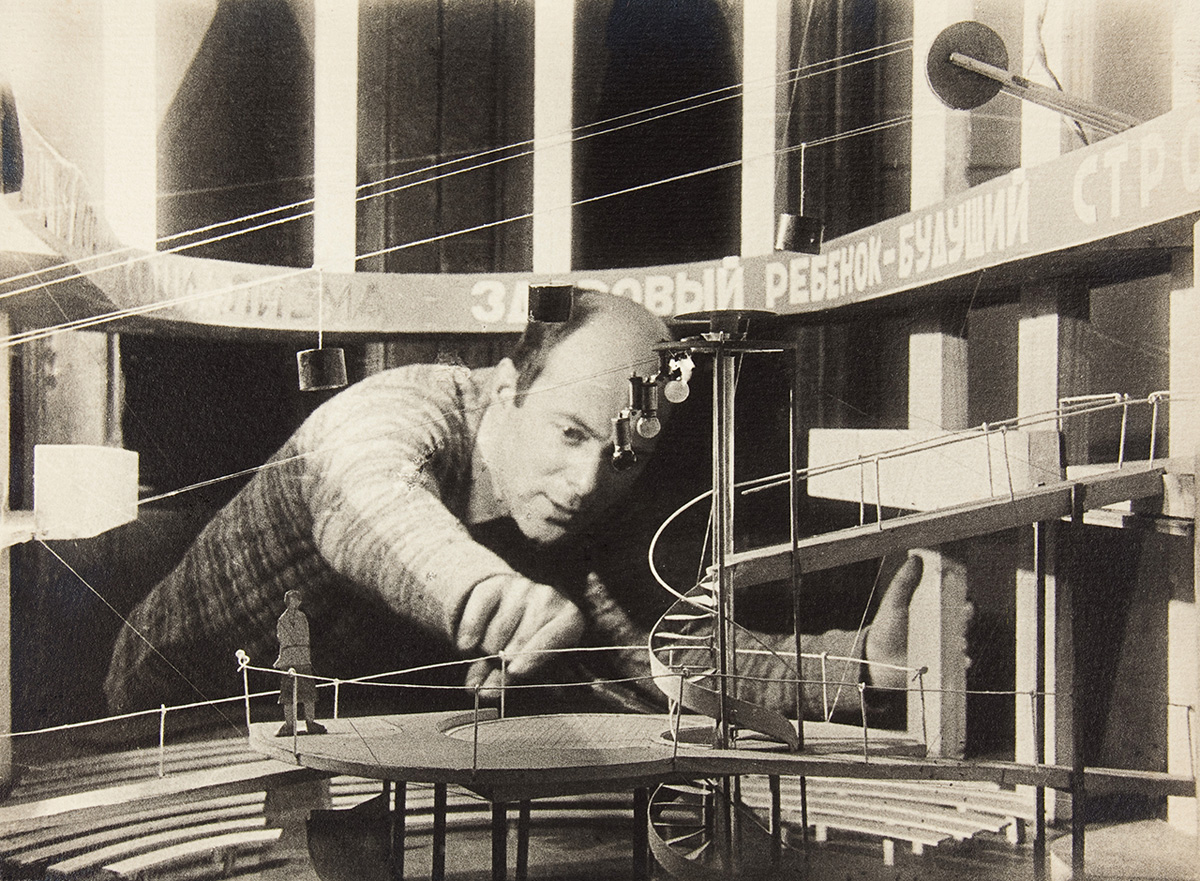
Lazar Markovich Lissitzky (Russian: Ла́зарь Ма́ркович Лиси́цкий) was a pivotal figure in the avant-garde art movement of the early 20th century, whose contributions spanned across multiple disciplines including painting, architecture, and graphic design. Born in Pochinok, Russian Empire (now in Smolensk Oblast, Russia), Lissitzky is renowned for his profound influence on the development of Constructivism, a movement characterized by the integration of technology and industry into the arts.
Lissitzky's work is distinguished by its innovative use of geometric forms, bold colors, and dynamic compositions, which sought not only to reflect the modern industrial world but also to actively participate in shaping it. His artworks and theories were instrumental in bridging the gap between the avant-garde movements in Russia and Western Europe, facilitating a cross-cultural exchange that enriched the development of modern art. Among his most notable contributions are his "Proun" series, an acronym for "Project for the Affirmation of the New" in Russian, which encapsulates his vision of art as a transformative social force.
His legacy is preserved in some of the world's most prestigious museums and galleries, including the Museum of Modern Art in New York and the Russian State Museum in Saint Petersburg. These institutions house key works that exemplify Lissitzky's groundbreaking approach to art and design, making them a focal point for collectors and experts in the field of art and antiques.
For those deeply invested in the evolution of modern art and its profound impact on culture and society, Lissitzky's work offers invaluable insights into the creative exploration of form and space. His contributions continue to inspire contemporary artists and designers, emphasizing the enduring relevance of his vision.
We invite collectors and art experts to sign up for updates on new product sales and auction events related to Lazar Markovich Lissitzky. This subscription is an opportunity to stay informed about the latest acquisitions and offerings that celebrate the legacy of a visionary artist whose work continues to resonate with audiences worldwide.
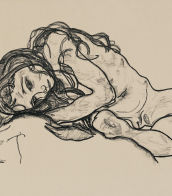

Lazar Markovich Lissitzky (Russian: Ла́зарь Ма́ркович Лиси́цкий) was a pivotal figure in the avant-garde art movement of the early 20th century, whose contributions spanned across multiple disciplines including painting, architecture, and graphic design. Born in Pochinok, Russian Empire (now in Smolensk Oblast, Russia), Lissitzky is renowned for his profound influence on the development of Constructivism, a movement characterized by the integration of technology and industry into the arts.
Lissitzky's work is distinguished by its innovative use of geometric forms, bold colors, and dynamic compositions, which sought not only to reflect the modern industrial world but also to actively participate in shaping it. His artworks and theories were instrumental in bridging the gap between the avant-garde movements in Russia and Western Europe, facilitating a cross-cultural exchange that enriched the development of modern art. Among his most notable contributions are his "Proun" series, an acronym for "Project for the Affirmation of the New" in Russian, which encapsulates his vision of art as a transformative social force.
His legacy is preserved in some of the world's most prestigious museums and galleries, including the Museum of Modern Art in New York and the Russian State Museum in Saint Petersburg. These institutions house key works that exemplify Lissitzky's groundbreaking approach to art and design, making them a focal point for collectors and experts in the field of art and antiques.
For those deeply invested in the evolution of modern art and its profound impact on culture and society, Lissitzky's work offers invaluable insights into the creative exploration of form and space. His contributions continue to inspire contemporary artists and designers, emphasizing the enduring relevance of his vision.
We invite collectors and art experts to sign up for updates on new product sales and auction events related to Lazar Markovich Lissitzky. This subscription is an opportunity to stay informed about the latest acquisitions and offerings that celebrate the legacy of a visionary artist whose work continues to resonate with audiences worldwide.


Lazar Markovich Lissitzky (Russian: Ла́зарь Ма́ркович Лиси́цкий) was a pivotal figure in the avant-garde art movement of the early 20th century, whose contributions spanned across multiple disciplines including painting, architecture, and graphic design. Born in Pochinok, Russian Empire (now in Smolensk Oblast, Russia), Lissitzky is renowned for his profound influence on the development of Constructivism, a movement characterized by the integration of technology and industry into the arts.
Lissitzky's work is distinguished by its innovative use of geometric forms, bold colors, and dynamic compositions, which sought not only to reflect the modern industrial world but also to actively participate in shaping it. His artworks and theories were instrumental in bridging the gap between the avant-garde movements in Russia and Western Europe, facilitating a cross-cultural exchange that enriched the development of modern art. Among his most notable contributions are his "Proun" series, an acronym for "Project for the Affirmation of the New" in Russian, which encapsulates his vision of art as a transformative social force.
His legacy is preserved in some of the world's most prestigious museums and galleries, including the Museum of Modern Art in New York and the Russian State Museum in Saint Petersburg. These institutions house key works that exemplify Lissitzky's groundbreaking approach to art and design, making them a focal point for collectors and experts in the field of art and antiques.
For those deeply invested in the evolution of modern art and its profound impact on culture and society, Lissitzky's work offers invaluable insights into the creative exploration of form and space. His contributions continue to inspire contemporary artists and designers, emphasizing the enduring relevance of his vision.
We invite collectors and art experts to sign up for updates on new product sales and auction events related to Lazar Markovich Lissitzky. This subscription is an opportunity to stay informed about the latest acquisitions and offerings that celebrate the legacy of a visionary artist whose work continues to resonate with audiences worldwide.
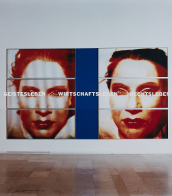

Lazar Markovich Lissitzky (Russian: Ла́зарь Ма́ркович Лиси́цкий) was a pivotal figure in the avant-garde art movement of the early 20th century, whose contributions spanned across multiple disciplines including painting, architecture, and graphic design. Born in Pochinok, Russian Empire (now in Smolensk Oblast, Russia), Lissitzky is renowned for his profound influence on the development of Constructivism, a movement characterized by the integration of technology and industry into the arts.
Lissitzky's work is distinguished by its innovative use of geometric forms, bold colors, and dynamic compositions, which sought not only to reflect the modern industrial world but also to actively participate in shaping it. His artworks and theories were instrumental in bridging the gap between the avant-garde movements in Russia and Western Europe, facilitating a cross-cultural exchange that enriched the development of modern art. Among his most notable contributions are his "Proun" series, an acronym for "Project for the Affirmation of the New" in Russian, which encapsulates his vision of art as a transformative social force.
His legacy is preserved in some of the world's most prestigious museums and galleries, including the Museum of Modern Art in New York and the Russian State Museum in Saint Petersburg. These institutions house key works that exemplify Lissitzky's groundbreaking approach to art and design, making them a focal point for collectors and experts in the field of art and antiques.
For those deeply invested in the evolution of modern art and its profound impact on culture and society, Lissitzky's work offers invaluable insights into the creative exploration of form and space. His contributions continue to inspire contemporary artists and designers, emphasizing the enduring relevance of his vision.
We invite collectors and art experts to sign up for updates on new product sales and auction events related to Lazar Markovich Lissitzky. This subscription is an opportunity to stay informed about the latest acquisitions and offerings that celebrate the legacy of a visionary artist whose work continues to resonate with audiences worldwide.
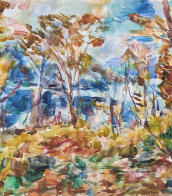

Marc Chagall (Russian: Марк Заха́рович Шага́л), born Moishe Shagal in 1887 near Vitebsk, Belarus (then part of the Russian Empire), was a Belarusian and French artist celebrated for his pivotal role in the avant-garde movement and his unique integration of Eastern European Jewish culture into modern art. His contributions spanned several artistic formats including painting, stained glass, stage sets, ceramics, tapestries, and fine art prints. Chagall's early modernist tendencies were enriched by his experiences across Saint Petersburg, Paris, and Berlin before World War I, leading to a distinctive style that melded Cubism, Symbolism, and Fauvism with his Jewish heritage.
Chagall's work is recognized for its emotional depth, often exploring themes of love, memory, and Jewish folklore through vibrant colors and dreamlike imagery. Notably, art critic Robert Hughes described him as "the quintessential Jewish artist of the twentieth century," a sentiment echoed by art historian Michael J. Lewis who regarded Chagall as a significant figure within European modernism and as the world's preeminent Jewish artist of his time.
Among Chagall's famed contributions are his stained-glass windows for the cathedrals of Reims and Metz, the UN, and the Jerusalem Windows in Israel. His monumental paintings include parts of the ceiling of the Paris Opéra and works that explore biblical themes, a hallmark of his oeuvre that underscores his enduring engagement with spiritual and religious motifs.
For art collectors and antiques experts, Chagall's works are notable not only for their artistic innovation but also for their rich cultural and historical significance. His art is housed in many prestigious museums worldwide, including the Marc Chagall National Museum in Nice, France, which focuses on his works inspired by religion and houses the series of paintings illustrating the biblical message.
For those interested in exploring Chagall's legacy and the vibrant intersection of culture, art, and history his work represents, signing up for updates on new product sales and auction events related to Marc Chagall can provide invaluable insights and opportunities. This is an invitation to engage more deeply with the world of art and culture that Chagall so uniquely encapsulated in his work.

Lazar Markovich Lissitzky (Russian: Ла́зарь Ма́ркович Лиси́цкий) was a pivotal figure in the avant-garde art movement of the early 20th century, whose contributions spanned across multiple disciplines including painting, architecture, and graphic design. Born in Pochinok, Russian Empire (now in Smolensk Oblast, Russia), Lissitzky is renowned for his profound influence on the development of Constructivism, a movement characterized by the integration of technology and industry into the arts.
Lissitzky's work is distinguished by its innovative use of geometric forms, bold colors, and dynamic compositions, which sought not only to reflect the modern industrial world but also to actively participate in shaping it. His artworks and theories were instrumental in bridging the gap between the avant-garde movements in Russia and Western Europe, facilitating a cross-cultural exchange that enriched the development of modern art. Among his most notable contributions are his "Proun" series, an acronym for "Project for the Affirmation of the New" in Russian, which encapsulates his vision of art as a transformative social force.
His legacy is preserved in some of the world's most prestigious museums and galleries, including the Museum of Modern Art in New York and the Russian State Museum in Saint Petersburg. These institutions house key works that exemplify Lissitzky's groundbreaking approach to art and design, making them a focal point for collectors and experts in the field of art and antiques.
For those deeply invested in the evolution of modern art and its profound impact on culture and society, Lissitzky's work offers invaluable insights into the creative exploration of form and space. His contributions continue to inspire contemporary artists and designers, emphasizing the enduring relevance of his vision.
We invite collectors and art experts to sign up for updates on new product sales and auction events related to Lazar Markovich Lissitzky. This subscription is an opportunity to stay informed about the latest acquisitions and offerings that celebrate the legacy of a visionary artist whose work continues to resonate with audiences worldwide.


Lazar Markovich Lissitzky (Russian: Ла́зарь Ма́ркович Лиси́цкий) was a pivotal figure in the avant-garde art movement of the early 20th century, whose contributions spanned across multiple disciplines including painting, architecture, and graphic design. Born in Pochinok, Russian Empire (now in Smolensk Oblast, Russia), Lissitzky is renowned for his profound influence on the development of Constructivism, a movement characterized by the integration of technology and industry into the arts.
Lissitzky's work is distinguished by its innovative use of geometric forms, bold colors, and dynamic compositions, which sought not only to reflect the modern industrial world but also to actively participate in shaping it. His artworks and theories were instrumental in bridging the gap between the avant-garde movements in Russia and Western Europe, facilitating a cross-cultural exchange that enriched the development of modern art. Among his most notable contributions are his "Proun" series, an acronym for "Project for the Affirmation of the New" in Russian, which encapsulates his vision of art as a transformative social force.
His legacy is preserved in some of the world's most prestigious museums and galleries, including the Museum of Modern Art in New York and the Russian State Museum in Saint Petersburg. These institutions house key works that exemplify Lissitzky's groundbreaking approach to art and design, making them a focal point for collectors and experts in the field of art and antiques.
For those deeply invested in the evolution of modern art and its profound impact on culture and society, Lissitzky's work offers invaluable insights into the creative exploration of form and space. His contributions continue to inspire contemporary artists and designers, emphasizing the enduring relevance of his vision.
We invite collectors and art experts to sign up for updates on new product sales and auction events related to Lazar Markovich Lissitzky. This subscription is an opportunity to stay informed about the latest acquisitions and offerings that celebrate the legacy of a visionary artist whose work continues to resonate with audiences worldwide.


Lazar Markovich Lissitzky (Russian: Ла́зарь Ма́ркович Лиси́цкий) was a pivotal figure in the avant-garde art movement of the early 20th century, whose contributions spanned across multiple disciplines including painting, architecture, and graphic design. Born in Pochinok, Russian Empire (now in Smolensk Oblast, Russia), Lissitzky is renowned for his profound influence on the development of Constructivism, a movement characterized by the integration of technology and industry into the arts.
Lissitzky's work is distinguished by its innovative use of geometric forms, bold colors, and dynamic compositions, which sought not only to reflect the modern industrial world but also to actively participate in shaping it. His artworks and theories were instrumental in bridging the gap between the avant-garde movements in Russia and Western Europe, facilitating a cross-cultural exchange that enriched the development of modern art. Among his most notable contributions are his "Proun" series, an acronym for "Project for the Affirmation of the New" in Russian, which encapsulates his vision of art as a transformative social force.
His legacy is preserved in some of the world's most prestigious museums and galleries, including the Museum of Modern Art in New York and the Russian State Museum in Saint Petersburg. These institutions house key works that exemplify Lissitzky's groundbreaking approach to art and design, making them a focal point for collectors and experts in the field of art and antiques.
For those deeply invested in the evolution of modern art and its profound impact on culture and society, Lissitzky's work offers invaluable insights into the creative exploration of form and space. His contributions continue to inspire contemporary artists and designers, emphasizing the enduring relevance of his vision.
We invite collectors and art experts to sign up for updates on new product sales and auction events related to Lazar Markovich Lissitzky. This subscription is an opportunity to stay informed about the latest acquisitions and offerings that celebrate the legacy of a visionary artist whose work continues to resonate with audiences worldwide.


Lazar Markovich Lissitzky (Russian: Ла́зарь Ма́ркович Лиси́цкий) was a pivotal figure in the avant-garde art movement of the early 20th century, whose contributions spanned across multiple disciplines including painting, architecture, and graphic design. Born in Pochinok, Russian Empire (now in Smolensk Oblast, Russia), Lissitzky is renowned for his profound influence on the development of Constructivism, a movement characterized by the integration of technology and industry into the arts.
Lissitzky's work is distinguished by its innovative use of geometric forms, bold colors, and dynamic compositions, which sought not only to reflect the modern industrial world but also to actively participate in shaping it. His artworks and theories were instrumental in bridging the gap between the avant-garde movements in Russia and Western Europe, facilitating a cross-cultural exchange that enriched the development of modern art. Among his most notable contributions are his "Proun" series, an acronym for "Project for the Affirmation of the New" in Russian, which encapsulates his vision of art as a transformative social force.
His legacy is preserved in some of the world's most prestigious museums and galleries, including the Museum of Modern Art in New York and the Russian State Museum in Saint Petersburg. These institutions house key works that exemplify Lissitzky's groundbreaking approach to art and design, making them a focal point for collectors and experts in the field of art and antiques.
For those deeply invested in the evolution of modern art and its profound impact on culture and society, Lissitzky's work offers invaluable insights into the creative exploration of form and space. His contributions continue to inspire contemporary artists and designers, emphasizing the enduring relevance of his vision.
We invite collectors and art experts to sign up for updates on new product sales and auction events related to Lazar Markovich Lissitzky. This subscription is an opportunity to stay informed about the latest acquisitions and offerings that celebrate the legacy of a visionary artist whose work continues to resonate with audiences worldwide.


Lazar Markovich Lissitzky (Russian: Ла́зарь Ма́ркович Лиси́цкий) was a pivotal figure in the avant-garde art movement of the early 20th century, whose contributions spanned across multiple disciplines including painting, architecture, and graphic design. Born in Pochinok, Russian Empire (now in Smolensk Oblast, Russia), Lissitzky is renowned for his profound influence on the development of Constructivism, a movement characterized by the integration of technology and industry into the arts.
Lissitzky's work is distinguished by its innovative use of geometric forms, bold colors, and dynamic compositions, which sought not only to reflect the modern industrial world but also to actively participate in shaping it. His artworks and theories were instrumental in bridging the gap between the avant-garde movements in Russia and Western Europe, facilitating a cross-cultural exchange that enriched the development of modern art. Among his most notable contributions are his "Proun" series, an acronym for "Project for the Affirmation of the New" in Russian, which encapsulates his vision of art as a transformative social force.
His legacy is preserved in some of the world's most prestigious museums and galleries, including the Museum of Modern Art in New York and the Russian State Museum in Saint Petersburg. These institutions house key works that exemplify Lissitzky's groundbreaking approach to art and design, making them a focal point for collectors and experts in the field of art and antiques.
For those deeply invested in the evolution of modern art and its profound impact on culture and society, Lissitzky's work offers invaluable insights into the creative exploration of form and space. His contributions continue to inspire contemporary artists and designers, emphasizing the enduring relevance of his vision.
We invite collectors and art experts to sign up for updates on new product sales and auction events related to Lazar Markovich Lissitzky. This subscription is an opportunity to stay informed about the latest acquisitions and offerings that celebrate the legacy of a visionary artist whose work continues to resonate with audiences worldwide.


Lazar Markovich Lissitzky (Russian: Ла́зарь Ма́ркович Лиси́цкий) was a pivotal figure in the avant-garde art movement of the early 20th century, whose contributions spanned across multiple disciplines including painting, architecture, and graphic design. Born in Pochinok, Russian Empire (now in Smolensk Oblast, Russia), Lissitzky is renowned for his profound influence on the development of Constructivism, a movement characterized by the integration of technology and industry into the arts.
Lissitzky's work is distinguished by its innovative use of geometric forms, bold colors, and dynamic compositions, which sought not only to reflect the modern industrial world but also to actively participate in shaping it. His artworks and theories were instrumental in bridging the gap between the avant-garde movements in Russia and Western Europe, facilitating a cross-cultural exchange that enriched the development of modern art. Among his most notable contributions are his "Proun" series, an acronym for "Project for the Affirmation of the New" in Russian, which encapsulates his vision of art as a transformative social force.
His legacy is preserved in some of the world's most prestigious museums and galleries, including the Museum of Modern Art in New York and the Russian State Museum in Saint Petersburg. These institutions house key works that exemplify Lissitzky's groundbreaking approach to art and design, making them a focal point for collectors and experts in the field of art and antiques.
For those deeply invested in the evolution of modern art and its profound impact on culture and society, Lissitzky's work offers invaluable insights into the creative exploration of form and space. His contributions continue to inspire contemporary artists and designers, emphasizing the enduring relevance of his vision.
We invite collectors and art experts to sign up for updates on new product sales and auction events related to Lazar Markovich Lissitzky. This subscription is an opportunity to stay informed about the latest acquisitions and offerings that celebrate the legacy of a visionary artist whose work continues to resonate with audiences worldwide.


Lazar Markovich Lissitzky (Russian: Ла́зарь Ма́ркович Лиси́цкий) was a pivotal figure in the avant-garde art movement of the early 20th century, whose contributions spanned across multiple disciplines including painting, architecture, and graphic design. Born in Pochinok, Russian Empire (now in Smolensk Oblast, Russia), Lissitzky is renowned for his profound influence on the development of Constructivism, a movement characterized by the integration of technology and industry into the arts.
Lissitzky's work is distinguished by its innovative use of geometric forms, bold colors, and dynamic compositions, which sought not only to reflect the modern industrial world but also to actively participate in shaping it. His artworks and theories were instrumental in bridging the gap between the avant-garde movements in Russia and Western Europe, facilitating a cross-cultural exchange that enriched the development of modern art. Among his most notable contributions are his "Proun" series, an acronym for "Project for the Affirmation of the New" in Russian, which encapsulates his vision of art as a transformative social force.
His legacy is preserved in some of the world's most prestigious museums and galleries, including the Museum of Modern Art in New York and the Russian State Museum in Saint Petersburg. These institutions house key works that exemplify Lissitzky's groundbreaking approach to art and design, making them a focal point for collectors and experts in the field of art and antiques.
For those deeply invested in the evolution of modern art and its profound impact on culture and society, Lissitzky's work offers invaluable insights into the creative exploration of form and space. His contributions continue to inspire contemporary artists and designers, emphasizing the enduring relevance of his vision.
We invite collectors and art experts to sign up for updates on new product sales and auction events related to Lazar Markovich Lissitzky. This subscription is an opportunity to stay informed about the latest acquisitions and offerings that celebrate the legacy of a visionary artist whose work continues to resonate with audiences worldwide.


Lazar Markovich Lissitzky (Russian: Ла́зарь Ма́ркович Лиси́цкий) was a pivotal figure in the avant-garde art movement of the early 20th century, whose contributions spanned across multiple disciplines including painting, architecture, and graphic design. Born in Pochinok, Russian Empire (now in Smolensk Oblast, Russia), Lissitzky is renowned for his profound influence on the development of Constructivism, a movement characterized by the integration of technology and industry into the arts.
Lissitzky's work is distinguished by its innovative use of geometric forms, bold colors, and dynamic compositions, which sought not only to reflect the modern industrial world but also to actively participate in shaping it. His artworks and theories were instrumental in bridging the gap between the avant-garde movements in Russia and Western Europe, facilitating a cross-cultural exchange that enriched the development of modern art. Among his most notable contributions are his "Proun" series, an acronym for "Project for the Affirmation of the New" in Russian, which encapsulates his vision of art as a transformative social force.
His legacy is preserved in some of the world's most prestigious museums and galleries, including the Museum of Modern Art in New York and the Russian State Museum in Saint Petersburg. These institutions house key works that exemplify Lissitzky's groundbreaking approach to art and design, making them a focal point for collectors and experts in the field of art and antiques.
For those deeply invested in the evolution of modern art and its profound impact on culture and society, Lissitzky's work offers invaluable insights into the creative exploration of form and space. His contributions continue to inspire contemporary artists and designers, emphasizing the enduring relevance of his vision.
We invite collectors and art experts to sign up for updates on new product sales and auction events related to Lazar Markovich Lissitzky. This subscription is an opportunity to stay informed about the latest acquisitions and offerings that celebrate the legacy of a visionary artist whose work continues to resonate with audiences worldwide.
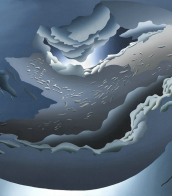

Lazar Markovich Lissitzky (Russian: Ла́зарь Ма́ркович Лиси́цкий) was a pivotal figure in the avant-garde art movement of the early 20th century, whose contributions spanned across multiple disciplines including painting, architecture, and graphic design. Born in Pochinok, Russian Empire (now in Smolensk Oblast, Russia), Lissitzky is renowned for his profound influence on the development of Constructivism, a movement characterized by the integration of technology and industry into the arts.
Lissitzky's work is distinguished by its innovative use of geometric forms, bold colors, and dynamic compositions, which sought not only to reflect the modern industrial world but also to actively participate in shaping it. His artworks and theories were instrumental in bridging the gap between the avant-garde movements in Russia and Western Europe, facilitating a cross-cultural exchange that enriched the development of modern art. Among his most notable contributions are his "Proun" series, an acronym for "Project for the Affirmation of the New" in Russian, which encapsulates his vision of art as a transformative social force.
His legacy is preserved in some of the world's most prestigious museums and galleries, including the Museum of Modern Art in New York and the Russian State Museum in Saint Petersburg. These institutions house key works that exemplify Lissitzky's groundbreaking approach to art and design, making them a focal point for collectors and experts in the field of art and antiques.
For those deeply invested in the evolution of modern art and its profound impact on culture and society, Lissitzky's work offers invaluable insights into the creative exploration of form and space. His contributions continue to inspire contemporary artists and designers, emphasizing the enduring relevance of his vision.
We invite collectors and art experts to sign up for updates on new product sales and auction events related to Lazar Markovich Lissitzky. This subscription is an opportunity to stay informed about the latest acquisitions and offerings that celebrate the legacy of a visionary artist whose work continues to resonate with audiences worldwide.
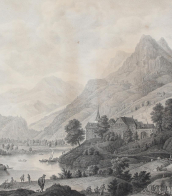

Lazar Markovich Lissitzky (Russian: Ла́зарь Ма́ркович Лиси́цкий) was a pivotal figure in the avant-garde art movement of the early 20th century, whose contributions spanned across multiple disciplines including painting, architecture, and graphic design. Born in Pochinok, Russian Empire (now in Smolensk Oblast, Russia), Lissitzky is renowned for his profound influence on the development of Constructivism, a movement characterized by the integration of technology and industry into the arts.
Lissitzky's work is distinguished by its innovative use of geometric forms, bold colors, and dynamic compositions, which sought not only to reflect the modern industrial world but also to actively participate in shaping it. His artworks and theories were instrumental in bridging the gap between the avant-garde movements in Russia and Western Europe, facilitating a cross-cultural exchange that enriched the development of modern art. Among his most notable contributions are his "Proun" series, an acronym for "Project for the Affirmation of the New" in Russian, which encapsulates his vision of art as a transformative social force.
His legacy is preserved in some of the world's most prestigious museums and galleries, including the Museum of Modern Art in New York and the Russian State Museum in Saint Petersburg. These institutions house key works that exemplify Lissitzky's groundbreaking approach to art and design, making them a focal point for collectors and experts in the field of art and antiques.
For those deeply invested in the evolution of modern art and its profound impact on culture and society, Lissitzky's work offers invaluable insights into the creative exploration of form and space. His contributions continue to inspire contemporary artists and designers, emphasizing the enduring relevance of his vision.
We invite collectors and art experts to sign up for updates on new product sales and auction events related to Lazar Markovich Lissitzky. This subscription is an opportunity to stay informed about the latest acquisitions and offerings that celebrate the legacy of a visionary artist whose work continues to resonate with audiences worldwide.
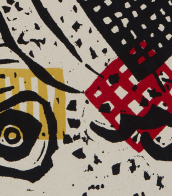

Lazar Markovich Lissitzky (Russian: Ла́зарь Ма́ркович Лиси́цкий) was a pivotal figure in the avant-garde art movement of the early 20th century, whose contributions spanned across multiple disciplines including painting, architecture, and graphic design. Born in Pochinok, Russian Empire (now in Smolensk Oblast, Russia), Lissitzky is renowned for his profound influence on the development of Constructivism, a movement characterized by the integration of technology and industry into the arts.
Lissitzky's work is distinguished by its innovative use of geometric forms, bold colors, and dynamic compositions, which sought not only to reflect the modern industrial world but also to actively participate in shaping it. His artworks and theories were instrumental in bridging the gap between the avant-garde movements in Russia and Western Europe, facilitating a cross-cultural exchange that enriched the development of modern art. Among his most notable contributions are his "Proun" series, an acronym for "Project for the Affirmation of the New" in Russian, which encapsulates his vision of art as a transformative social force.
His legacy is preserved in some of the world's most prestigious museums and galleries, including the Museum of Modern Art in New York and the Russian State Museum in Saint Petersburg. These institutions house key works that exemplify Lissitzky's groundbreaking approach to art and design, making them a focal point for collectors and experts in the field of art and antiques.
For those deeply invested in the evolution of modern art and its profound impact on culture and society, Lissitzky's work offers invaluable insights into the creative exploration of form and space. His contributions continue to inspire contemporary artists and designers, emphasizing the enduring relevance of his vision.
We invite collectors and art experts to sign up for updates on new product sales and auction events related to Lazar Markovich Lissitzky. This subscription is an opportunity to stay informed about the latest acquisitions and offerings that celebrate the legacy of a visionary artist whose work continues to resonate with audiences worldwide.


Lazar Markovich Lissitzky (Russian: Ла́зарь Ма́ркович Лиси́цкий) was a pivotal figure in the avant-garde art movement of the early 20th century, whose contributions spanned across multiple disciplines including painting, architecture, and graphic design. Born in Pochinok, Russian Empire (now in Smolensk Oblast, Russia), Lissitzky is renowned for his profound influence on the development of Constructivism, a movement characterized by the integration of technology and industry into the arts.
Lissitzky's work is distinguished by its innovative use of geometric forms, bold colors, and dynamic compositions, which sought not only to reflect the modern industrial world but also to actively participate in shaping it. His artworks and theories were instrumental in bridging the gap between the avant-garde movements in Russia and Western Europe, facilitating a cross-cultural exchange that enriched the development of modern art. Among his most notable contributions are his "Proun" series, an acronym for "Project for the Affirmation of the New" in Russian, which encapsulates his vision of art as a transformative social force.
His legacy is preserved in some of the world's most prestigious museums and galleries, including the Museum of Modern Art in New York and the Russian State Museum in Saint Petersburg. These institutions house key works that exemplify Lissitzky's groundbreaking approach to art and design, making them a focal point for collectors and experts in the field of art and antiques.
For those deeply invested in the evolution of modern art and its profound impact on culture and society, Lissitzky's work offers invaluable insights into the creative exploration of form and space. His contributions continue to inspire contemporary artists and designers, emphasizing the enduring relevance of his vision.
We invite collectors and art experts to sign up for updates on new product sales and auction events related to Lazar Markovich Lissitzky. This subscription is an opportunity to stay informed about the latest acquisitions and offerings that celebrate the legacy of a visionary artist whose work continues to resonate with audiences worldwide.
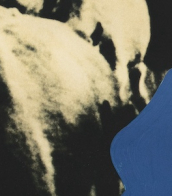

Lazar Markovich Lissitzky (Russian: Ла́зарь Ма́ркович Лиси́цкий) was a pivotal figure in the avant-garde art movement of the early 20th century, whose contributions spanned across multiple disciplines including painting, architecture, and graphic design. Born in Pochinok, Russian Empire (now in Smolensk Oblast, Russia), Lissitzky is renowned for his profound influence on the development of Constructivism, a movement characterized by the integration of technology and industry into the arts.
Lissitzky's work is distinguished by its innovative use of geometric forms, bold colors, and dynamic compositions, which sought not only to reflect the modern industrial world but also to actively participate in shaping it. His artworks and theories were instrumental in bridging the gap between the avant-garde movements in Russia and Western Europe, facilitating a cross-cultural exchange that enriched the development of modern art. Among his most notable contributions are his "Proun" series, an acronym for "Project for the Affirmation of the New" in Russian, which encapsulates his vision of art as a transformative social force.
His legacy is preserved in some of the world's most prestigious museums and galleries, including the Museum of Modern Art in New York and the Russian State Museum in Saint Petersburg. These institutions house key works that exemplify Lissitzky's groundbreaking approach to art and design, making them a focal point for collectors and experts in the field of art and antiques.
For those deeply invested in the evolution of modern art and its profound impact on culture and society, Lissitzky's work offers invaluable insights into the creative exploration of form and space. His contributions continue to inspire contemporary artists and designers, emphasizing the enduring relevance of his vision.
We invite collectors and art experts to sign up for updates on new product sales and auction events related to Lazar Markovich Lissitzky. This subscription is an opportunity to stay informed about the latest acquisitions and offerings that celebrate the legacy of a visionary artist whose work continues to resonate with audiences worldwide.



